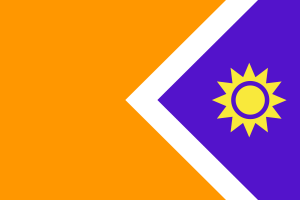Language/Marathi/Grammar/How-to-Use-Have
Hi Marathi learners! 😊
In this lesson, we will learn how to use the verb "have" in Marathi. "Have" is a very useful verb in any language. Knowing how to use it properly will help you to express yourself better and to understand others more easily in daily conversations. It is also important if you want to read Marathi literature or watch Marathi movies without subtitles. By the end of this lesson, you will be able to use "have" correctly in different situations. Let's get started!
With the completion of this lesson, consider investigating these related pages: Causative verbs & Adverbs.
"Have" in Marathi[edit | edit source]
In Marathi, "have" is translated as "असणे" (asaNe). It is used to show possession or relation between two things or people. It is also used to show the existence of something or someone.
Example:
| Marathi | Pronunciation | English |
|---|---|---|
| माझं घर असतं | maja"Ng ghar asat"Ng | I have a house |
| तुझं बेबाक दोस्त असतं | tuja"Ng bebAk dost asat"Ng | You have a fearless friend |
| रामाचं पुस्तक असतं | rAmAcaN pustak asat"Ng | Ram has a book |
| ओळख असतं का? | oLakh asat"Ng kA? | Is there recognition? |
In the above examples, "असतं" (asat"Ng) is used to show possession or existence of something or someone. It is important to note that the form of "असतं" (asat"Ng) changes according to the gender and number of the subject.
Example:
| Marathi | Pronunciation | English |
|---|---|---|
| त्यांचं घर असतो | tyAMcaN ghar asto | Their (masculine, singular) house exists |
| त्यांचं घर आहे | tyAMcaN ghar Ahe | Their (masculine, singular) house is there |
| त्यांची बगळ असती | tyAMcI bagaL astI | Their (feminine, singular) garden exists |
| त्यांच्या बगळात फुले आहेत | tyAMcyA bagaLAt phule Ahet | Flowers are there in their (feminine, singular) garden |
As you can see from the above examples, "असतो" (asto) and "असती" (astI) are used to show the existence of masculine and feminine singular subjects respectively. Likewise, "आहे" (Ahe) and "आहेत" (Ahett) are used to show the presence of something or someone.
"Have" in Different Tenses[edit | edit source]
In Marathi, as in English, "have" can also be used in different tenses. Here are some examples:
Present Tense[edit | edit source]
Present tense is used to talk about actions or events that are happening now or that are always true. To form the present tense, we add "आहे" (Ahe) or "असतो" (asto) to the end of the verb. The form of "आहे" (Ahe) changes according to the gender and number of the subject.
Example:
| Marathi | Pronunciation | English |
|---|---|---|
| मला बुक सापडली आहे | malA buk sApDlI Ahe | I have found the book |
| तू नक्की सोपं असतो | tU nakkI sop"N asato | You definitely have easy |
| तिने तुमचं फोन घ्यायला असताना दात केला | tine tumacN phon ghyAyalA asatAnA dAt kelA | They have given the gift while taking your phone |
In the above examples, "आहे" (Ahe) and "असतो" (asto) are used to show the present tense of "have".
Past Tense[edit | edit source]
Past tense is used to talk about actions or events that happened in the past. To form the past tense, we add either "होता" (hotA) or "असला" (asalA) to the end of the verb. "होता" (hotA) is used to show actions or events that occurred in the past and are completed. "असला" (asalA) is used to show actions or events that happened in the past and are still happening.
Example:
| Marathi | Pronunciation | English |
|---|---|---|
| मला बुक सापडली होती | malA buk sApDlI hotI | I had found the book |
| तू नक्की सोपं असलं | tU nakkI sop"N aslaM | You definitely had easy |
| तिने तुमचं फोन घ्यायला होते आहेत | tine tumacN phon ghyAyAlA hote Ahet | They had taken your phone |
In the above examples, "होती" (hotI) and "होते आहेत" (hote Ahet) are used to show the past tense of "have".
Future Tense[edit | edit source]
Future tense is used to talk about actions or events that will happen in the future. To form the future tense, we add "असेल" (asel) to the end of the verb.
Example:
| Marathi | Pronunciation | English |
|---|---|---|
| पूर्वपूर्वी काम करताना मला डिनर ऑर्डर केलेला असेल | pUrvpUravI kAm kartAnA malA dinner orDeN kelaLAsel | I will have ordered dinner while working |
| अफवाह नक्की सत्य झाली तर मी त्याची छायामय जगणार असेल | aphavAh nakkI satya jhAlI tar mI tyAchI chhAyAmay jagNAr asel | If the rumors come true, I will be having a colorful life |
In the above examples, "असेल" (asel) is used to show the future tense of "have".
Conclusion[edit | edit source]
Congratulations! You have now learned how to use "have" in Marathi. If you want to practice more, try to form sentences with "have" in different tenses and situations. To improve your Marathi Grammar, you can also use the Polyglot Club website. Find native speakers and ask them any questions!
Let's end this lesson with a dialogue between two friends:
- राजेश (Rajesh): "Template:Lang"
(Where is your mobile?)
- आमोद (Amol): "Template:Lang"
(It's in my pocket, you have your glasses.)
In this dialogue, we see how "असतं" (asat"Ng) is used to show possession or existence.
➡ If you have any questions, please ask them in the comments section below.
➡ Feel free to edit this wiki page if you think it can be improved. 😎
Congratulations on finishing this lesson! Explore these related pages to keep learning: Question Words & How to Use Be.
Other Lessons[edit | edit source]
- Negation nakaar नकार
- Conditional Mood
- Pronouns
- Adjectives
- Questions
- Gender
- Give your Opinion
- Future Tense
- How to Use Be

